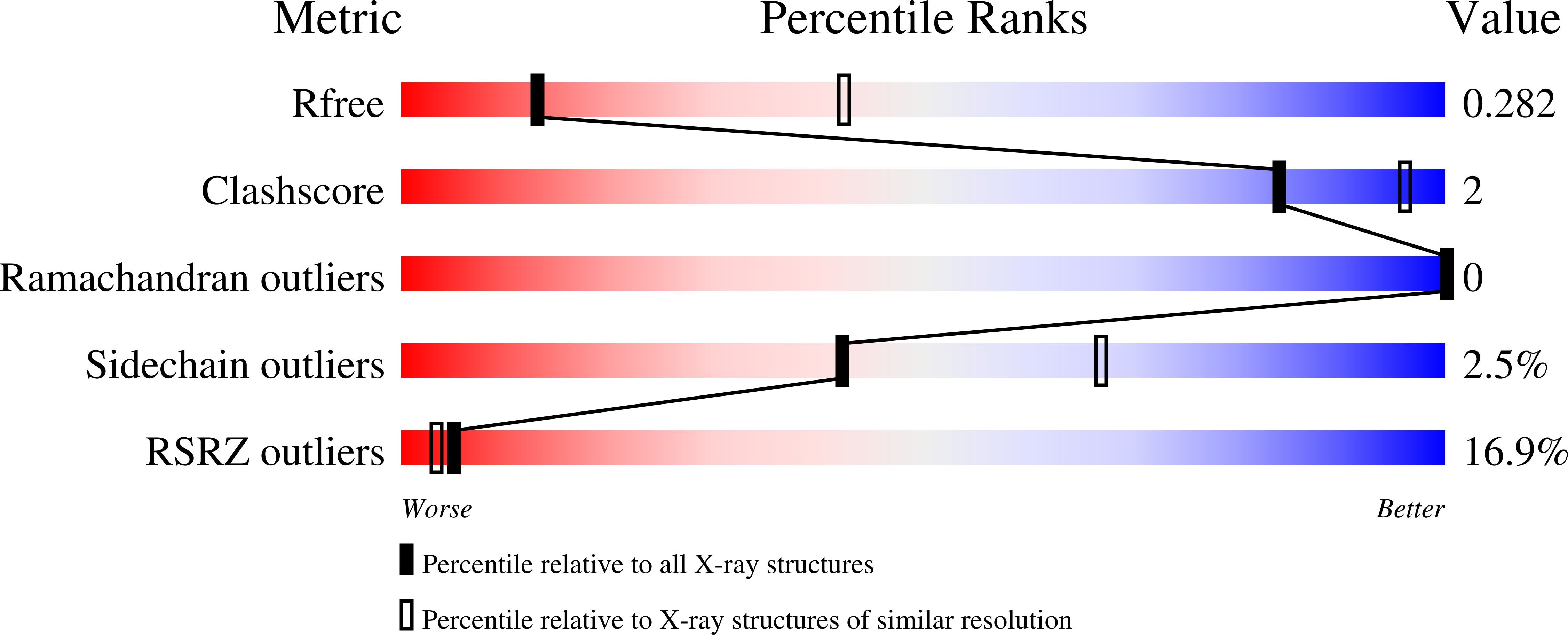
Deposition Date
2025-01-17
Release Date
2025-03-12
Last Version Date
2025-04-23
Entry Detail
PDB ID:
9MX8
Keywords:
Title:
Crystal structure of the DNA binding domain of FLI1 in complex with a DNA containing three contiguous GGAA sites
Biological Source:
Source Organism:
Homo sapiens (Taxon ID: 9606)
synthetic construct (Taxon ID: 32630)
synthetic construct (Taxon ID: 32630)
Host Organism:
Method Details:
Experimental Method:
Resolution:
3.15 Å
R-Value Free:
0.27
R-Value Work:
0.24
R-Value Observed:
0.25
Space Group:
P 32 2 1


